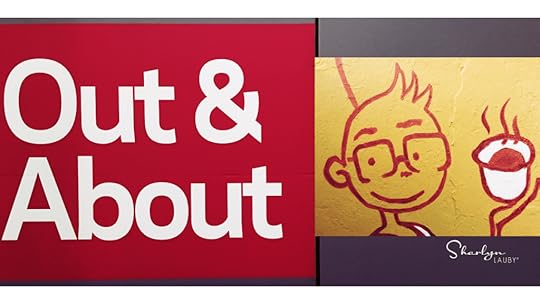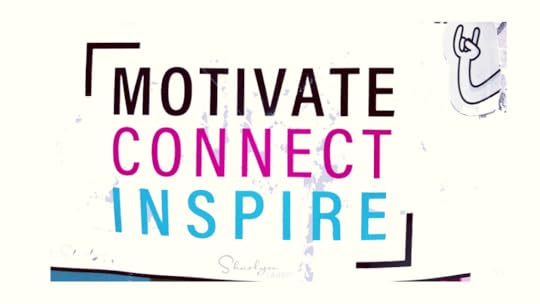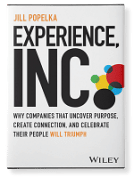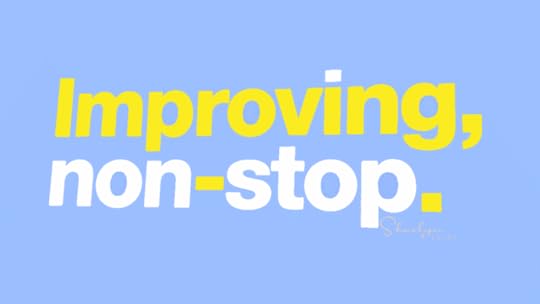Sharlyn J. Lauby's Blog, page 42
March 2, 2023
Do You Call Your Manager By Their First Name [POLL]
Estimated reading time: 2 minutes
Early in my career, I had a manager that expected to be addressed as Mr. LAST NAME. I thought it was sexist, elitist, insulting, weird. But after that one boss, I never experienced that again. Until recently.
I was trying to schedule an appointment with someone. Their administrative assistant was coordinating the meeting (not unusual) but the admin was referring to their manager as Mr. LAST NAME. It seemed weird. Especially in today’s work environment, where organizations are focused on building workplaces that are inclusive and welcoming.
Since that interaction, the whole “how do you address your manager” thing has weighed on my mind. I found an article on Ask a Manager titled “Office insists we refer to higher-ups as Mr. or Ms.” from a few years ago. It’s a good read if you want to check it out.
But it got me thinking. We spend a lot of time talking about the importance of the manager / employee relationship. People regularly say, “Employees don’t leave companies. They leave bad managers.” The way people address each other could set the stage for the work relationship and the company culture.
So, I thought it might be helpful to learn more and I’m very interested in your comments. I hope you’ll take a moment to respond to this HR Bartender completely anonymous one-question poll. If it did not come through via email, I hope you will .
How do you address your boss in a conversation with them?Some other answer not mentioned hereFirst nameLast name (Mr/Ms Smith), because I view it as a sign of respectLast name (Mr/Ms Smith), because my boss expects or requests itLast name (Mr/Ms Smith), because everyone uses last names hereSomething else, like we have office nicknames hereSubmit AnswerResultsBack to voteI know I don’t have to say it, but I’ll say it anyway. Let’s resist the temptation to share those colorful names that might be used between coworkers or found on the Reddit Anti-work sub. In other words, serious answers please. As always, I appreciate you taking the time to respond. We’ll share the answers in a couple of weeks. Thanks!
The post appeared first on hr bartender.
February 28, 2023
How to Manage Employment Law Posters – Ask HR Bartender

Estimated reading time: 7 minutes
Today’s reader question is very timely. Many organizations are asking telling demanding that employees return to the office. So, making sure that the office is ready for them will be important. And by ready, I mean compliant when it comes to employment law posters.
Hello! I am hoping to pick your brain since you have so much experience and are now consulting and have created this lovely site! I just reviewed one of your labor law articles, but I am still unsure of how to move forward with my situation.
I’m the HR Manager of a tech company that has 18 U.S. based employees, and our office is in Florida. We purchased the FL labor law poster and have our FL employees covered, but I am unsure about the remote employees. What digital poster do they need? Is it the Florida one since the company is based in Florida? Or is it their state specific poster because they work remotely in that state?
I haven’t been able to find a direct answer so far and want to ensure we are compliant for the rest of the year. Any information you can provide is greatly appreciated!
HR Bartender is delighted to have a long-standing partnership with Poster GuardÒ Compliance Protection, a division of HRdirect. So, I reached out to Ashley Kaplan, Esq., senior corporate counsel for HRdirect, to see if she would share her knowledge with us. Thankfully, she said yes.
Please remember that Ashley’s comments should not be construed as legal advice or as pertaining to any specific factual situations. If you have specific detailed questions, they should be addressed directly with your friendly neighborhood labor attorney.
Ashley, thanks for being here. This reader note mentions that they have 18 employees. Is there a minimum number of employees before an organization needs to display labor law posters? If so, what is it?

[Kaplan] Employers must comply with federal, state, city, and county posting requirements. On the federal level, most of the postings (4 out of 6) apply even if the employer only has one employee. On the state and local levels, the same general rule applies. The majority of labor law postings apply to all employers regardless of employee size. There are some exceptions, such as the federal Equal Employment Opportunity (EEOC) posting which applies to employers with 15 or more employees, and the Family and Medical Leave Act (FMLA) poster for those with 50 or more employees companywide.
(Editor’s Note: As a reminder, the six mandatory federal notices that most employers are required to post include: Equal Employment Opportunity (EEOC), Employee Polygraph Protection Act (EPPA), Fair Labor Standards Act (FLSA), Family and Medical Leave Act (FMLA), Occupational Safety and Health Act (OSHA) and the Uniformed Services Employment and Reemployment Rights Act (USERRA).)
Here’s a two-part question regarding remote employees. For part one, we’ve written about this before, but as a refresher… do remote employees need labor law posters ? Can the company provide a handout instead of a poster?
[Kaplan] Employers are required to provide mandatory workplace postings to all employees, regardless of where they work. That includes remote workers and home-based employees.
According to the U.S. Department of Labor (DOL), if an employee does not come into the office where the physical posters are displayed at least 3-4 times per month, the postings should be provided in an alternate format, such as electronically (for employees with email/internet access).
Employee ‘handouts’ are completely different, and typically refer to legal notices employers must personally distribute to employees at various points in the employment relationship, such as:
Upon hire, On employee anniversaries, When there are pay status changes, When an employee becomes pregnant, When an employee becomes injured or requests a leave of absence, and Upon termination.Each state and locality has different requirements. For the most part, these ‘handout’ requirements are separate and apart from workplace posting requirements. There are a few overlapping notices, but as a general rule the handout notices are separate and must be distributed in addition to the workplace posters. Each handout requirement is unique when it comes to the distribution method, but in most cases electronic delivery is acceptable.
The second part of this question about remote employees and labor law handouts is one we haven’t discussed before. Does the notice need to be for the state the employee lives in or the state that the organization is based in?
[Kaplan] Unfortunately, it’s not always clear which state laws apply in this instance. Most basic employment rights — such as minimum wage, overtime, and safety issues — are governed by the laws where the employee performs the work. However, depending on how your company is structured, your out-of-state employees may be covered by both states’ laws. Your notices (handouts and posters) should correspond with the actual employment laws applicable to each employee. Because it depends on so many factors, we recommend you consult with an attorney if you are unsure which employment laws apply to your employees, and it is always safe in the meantime to provide the notices for both states.
I know Poster Guard offers a labor law poster service. Does the labor law service include handouts for remote employees?
One option provides a custom link employers can post on their internal websites to give employees 24/7 access to the poster images, and one provides the digital posters directly to each employee by email, with full tracking of their acknowledgments for recordkeeping.
For the additional ‘handout’ notices that employers must personally distribute at various stages of the employment relationship, Poster Guard offers a comprehensive solution covering every handout requirement at the federal, state, and local levels. The Mandatory Employee Handout Service provides immediate access to a database of all required handout notices, includes attorney-written instructions for each handout (including permissible distribution methods), sends alerts whenever there are new or updated requirements, and allows for unlimited internal use of the files for the annual membership term.
Last question. One of the things this reader didn’t mention was future hiring. If the company continues to grow (and we hope they do!), then they will want to make sure new employees get the right notices. What can the organization do to make sure they remain in compliance?
[Kaplan] The Mandatory Employee Handout Service includes all handout notifications that are required for new hires under federal, state, city, and county employment laws. Poster Guard’s legal team keeps the notices up-to-date to ensure the right notices are available at the right time for ongoing compliance as you onboard new employees. With more than 100 mandatory handout updates and more than 200 mandatory poster updates in 2022 alone, it is critical to rely upon an experienced provider with a dedicated legal team keeping on top of these rapidly evolving legal requirements.

I want to extend a huge thanks to Ashley for sharing her knowledge with us. If you’re looking for additional information about managing employment law posters, check out Poster Guard’s on-demand webinar on “Posting Compliance and Lawsuits – Why You Should Care”.
In addition to placing your company at risk of legal fines and penalties, a real breakdown of trust can happen if an employee discovers that the organization isn’t maintaining compliance. An employee will start thinking, “If the company didn’t tell me about this, what else haven’t they told me?” Having a process in place for employees to receive the required employment law notices tells employees that the organization cares about doing the right thing.
The post How to Manage Employment Law Posters – Ask HR Bartender appeared first on hr bartender.
February 26, 2023
Creating a Workplace First Responder Team

Estimated reading time: 4 minutes
A first responder is a person with specialized training who is the first to arrive and provide assistance at the scene of an emergency. Often when we think of first responders, we think of law enforcement, paramedics, and firefighters.
Recently, Ontario, Canada updated its Occupational Health and Safety Act (OSHA) standards to mandate that certain employers equip their offices with naloxone kits. This medication, which is known by the brand name Narcan, can be used to save the life of a person experiencing an opioid overdose. According to Ontario’s public health website, they have seen a steady increase in opioid-related incidents over the past decade.
This isn’t a situation unique to Canada. In the United States, more than 85,000 people died from a drug-related overdose in the one-year span from August 2019 – August 2020. In a brief from the American Medical Association (AMA), they also suggest installing a naloxone rescue station at worksites.
These two articles made me wonder, how many organizations have some sort of onsite first responder team? And are employees who are a part of this team receiving the education and training they need? Of course, I’m not suggesting that workplace response teams replace outside experts like paramedics or medical technicians. But this could be a moment for organizations to consider their workplace emergency plans.
Talk with your legal and risk management teams. Before doing anything, organizations need to talk with their legal and risk departments about creating a first responder team. Get their insights. Companies need to know what they are legally obligated to do when it comes to providing emergency response. Then they can decide the purpose and scope of their response team.
Check out existing resources. The U.S. Occupational Safety and Health Administration has publications for employers to get you started. For instance, there’s one on the “Fundamentals of a Workplace First-Aid Program” and another on “Planning and Responding to Workplace Emergencies”. Organizations might need to make some adjustments based on their industry and location, but documents like these can offer some good initial information.
Discuss who might be on the team. In my experience, I’ve never been forced or mandated to be on an emergency response team based on my job title. Organizations will want to discuss how many individuals will be on the response team and how they will be selected. It might also be necessary to discuss with response team members the responsibilities and expectations that come with the role so they can opt out if they choose.
Get management buy-in. Everyone is going to have to buy-into this program because when there’s an emergency…there’s an emergency. A manager will not have the option of saying, “Sorry, but Leonard is working on a project and I’m short staffed, so we can’t help you with that emergency.” This could also prompt a conversation about having a few extra people on the response team in case of vacations and leaves.
Give people the training they need! I cannot emphasize this enough. Not only initial training but refresher training. It’s possible that the organization will go months or years without a major incident. (That’s a good thing.) But when there’s an emergency, people should be ready to respond and feel like they know what they’re doing.
Hopefully, organizations create workplace first responder teams and never have to use them because they never have an incident. But I’m not sure that’s practical thinking. The time to think about emergency response is before you have an emergency.
Oh, and P.S. In my experience of being on response teams, one thing we always did that was incredibly valuable was debrief after every incident. Even if it was a false alarm. We asked ourselves, “What did we do well?” and “What could we do differently next time?” If you’re not debriefing, consider adding it to your emergency protocols.
Image captured by Sharlyn Lauby while exploring the streets of Atlanta, GA
The post Creating a Workplace First Responder Team appeared first on hr bartender.
February 23, 2023
Organizations Need to Take Employee Concerns Seriously – Ask HR Bartender

Estimated reading time: 4 minutes
This is a long story, but worth a read. As an HR professional, it’s not unusual for employees to share stories expressing concerns like this one that has so many layers to it.
In November, I started a new job. During my first month, I was forced to work positions I wasn’t scheduled for and lost out on server tips since I had far less customers. I was forced to tip out a salaried manager.
In January, I was scheduled for surgery, which my employer knew about before hiring me. And they assured me that I’d still have a job after returning.
The day before my surgery, my employer scheduled to have a COVID test, even though I had COVID within the past 90 days. I had written documentation showing I could be at work even if I did recently have COVID, but I was sent home in the middle of my shift. On the day of surgery plus 2 days after I tried reaching managers to let them know I would probably need all 3 weeks that my surgeon said I needed to recuperate. I got no response.
The manager called me 2 days later saying there were rumors that I was not coming back after surgery, which I never spoke to them about. Admittedly, I was going to start working a day job which I had talked to the manager about in messages, in writing, but then ended up falling through.
I went to both managers and said I was feeling like I was being harassed. I have documentation of several encounters mainly with the owner harassing me. I said that something needed to be done about it since it was uncalled for. A week later, I was fired.
I’ve reached out to the attorney general, better business bureau, and a private attorney for wrongful termination along time with temporal disability discrimination and retaliation. Is there a case?
I wish I could provide a definitive answer to this situation. But I can’t – there are way too many things we don’t know. What state(s) are the business and the employee located? How many employees does the company have? There’s no mention of HR, does that mean there is no HR department, and no internal investigation was conducted? What policies and procedures are in place? And the list of questions goes on…you get the point.
But I do want to share some resources from HR Bartender that might be helpful with similar concerns, whether you’re an employer or employee.
Defining Workplace Retaliation
Workplace retaliation is serious. Perceptions of retaliatory action can damage credibility, destroy employee morale, and have a negative impact on workplace productivity. Organizations need to make sure that supervisors and managers clearly understand the company’s zero-tolerance for this type of behavior.
Retaliation claims are more than a legal risk. Yes, it’s true – retaliation can cost companies thousands of dollars. But they can also ruin company culture. And when your culture is of distrust, I don’t have to tell you what that means for employee recruitment, engagement, and retention.
Employees: When Should You Lawyer Up
An employee should have someone they trust to be a sounding board in the decision-making process. It could be a spouse or partner, a good friend, shop steward, or even a counselor in an employee assistance program (EAP). That person can offer the employee other perspectives and viewpoints, provide emotional support, and help the employee sift facts from subjective interpretations. That being said, there are times when you absolutely, positively need a lawyer.
Again, I wish there was a clear answer that I could provide. But the good news is, it sounds like this reader is searching for answers. Hopefully, they find some. Even if the answer isn’t what they wanted to hear.
And hopefully, if any employer is reading this, they might ask themselves, “Could this be our company?” “Are we doing a good job of listening to employees and addressing their concerns?” Organizations should have a zero tolerance for harassing behavior and retaliation.
Image captured by Sharlyn Lauby while exploring the streets of Fort Lauderdale, FL
The post Organizations Need to Take Employee Concerns Seriously – Ask HR Bartender appeared first on hr bartender.
February 21, 2023
How To Be More Curious – HR Bartender

Estimated reading time: 4 minutes
One of the qualities that employers want in an employee is curiosity. It’s defined as a “strong desire to know or learn something”. Curiosity can be incredibly helpful to employees and organizations. Here are a few examples:
An employee is trying to figure out how to set up a rule in their email software, so all emails related to a certain project are automatically moved to a specific folder. It’s been a long time since the employee had to set up a rule. Instead of asking around the office, they find a tutorial on YouTube.
A new manager wants to sign an employee up for a training session. This is the first time they’re doing this task. Instead of immediately calling HR, they find an internal FAQ on how to do it.
A third shift employee has a question about how to complete their benefits enrollment form. Because there are very few managers around on the overnight shift, they go looking for answers and find an internal video that answers their question.
There are countless examples of when employees and managers have questions and need answers. Going to ask a coworker is always an option but frankly, sometimes being curious and finding the answer on your own can be better than trying to ask around the office. Oh, and if you work in a hybrid or remote work environment, then you are “the office” and need to figure this stuff out on your own.
One of the reasons I wanted to write about being curious is because I’m seeing an increasing number of instances where people aren’t. Okay, I realize this is totally venting, but I’m amazed at the number of people who do not do an initial search in Facebook groups or Reddit subs to see if their question has already been asked (sometimes earlier that same day). Oh, and the resulting comments can be brutal!
Now take that scenario to the workplace. An employee recently attends a meeting about a new procedure. At the end of the meeting, the manager says the entire new procedure has been posted on the company intranet for reference. But the employee didn’t really pay attention (watched a few TikTok videos instead). Meeting ends and now they start asking their coworkers about the new procedure, which they would know if they had been paying attention. Or they could have gone to the reference guide, but they didn’t know about that either.
Curiosity – the desire to know or learn something – might be a helpful way to gain information and maintain good working relationships. Here are four things that might help when you have questions and need to “get curious”.
Stay well read on relevant topics. Listen, and ask questions for clarification.Take notes and use lists to stay focused. Use technology to curate and research information.I’m not saying don’t ever ask a coworker a question. But there are many times when either 1) the answer is right in front of us, we just need to take a moment to find it OR 2) we might actually learn more if we figure it out ourselves. It could be worth it to say, “I’m going to spend XX amount of time on this and if I can’t find the answer, then I’ll go ask someone.” Same is true if someone offers to tell you the answer. Maybe say, “I’d like to figure this out on my own. If I run into a challenge, can I come to you for assistance?” Show others you want to practice your curiosity.
Being able to find your own answers is a quality that organizations want in employees. Especially when organizations want a lean operation. Think about how you can find your own answers – successfully.
Image captured by Sharlyn Lauby while exploring a wonderful Cirque du Soleil show in Miami, FL
The post How To Be More Curious – HR Bartender appeared first on hr bartender.
February 19, 2023
Organizations Need to Keep Managers and Leaders Engaged

Estimated reading time: 3 minutes
With all the headlines about economic uncertainty, the one thing that organizations cannot afford to lose is great management and leadership. Companies need good managers and leaders to retain employees, guide their business, and keep customers happy. And let’s not forget good managers’ role in profitability!
Often when we’re talking about the organization, we’re talking about employees. It’s important to take a moment to remember that managers and leaders are employees too. They do their best work when they are engaged. That means treating managers with respect. Giving leaders the training and tools they need to be successful. And supporting their work.
If you’re looking for ways to keep your managers and leaders informed, engaged, and doing their best work, here are a few articles that might help.
We All Need a Little Nudge Now and Then
Alexandra Levit in a recent Wall Street Journal article talks about middle managers being stressed and burned out. We need our managers and we should find ways to help them. I know many organizations are offering training and development programs. That’s great. We need to continue doing that. But let me suggest that it’s not enough. Connecting a program of nudges to existing activities could be that extra effort that makes the connection stick. It takes the conversation out of the classroom or meeting or email and moves it to the workday.
Employee Burnout Is an Organizational Issue
Speaking about manager burnout, current business volatility can translate into burnout because organizations are under pressure to deliver, and employees aren’t getting their needs met. Now is the time to proactively address issues that could lead to employee burnout.
Employee Monitoring Shows a Lack of Trust
There’s nothing wrong with wanting to know that employees are doing the work to the company’s quality standard. And there’s nothing wrong with holding people accountable. But monitoring isn’t the solution. We need to treat people like adults, with respect, while holding them accountable for the work.
How to Properly Plan a Reduction in Force
Planning any type of workforce reduction is stressful. There are so many details. Organizations should get the right people involved, consider all the options, and communicate to everyone. It’s not the employees’ fault that the organization is doing a layoff or reduction in force. The organization needs to remember that and plan their actions accordingly.
Quiet Quitting is Nothing New: What It Is and What You Can Do About It
Employees should be allowed to have lives. Let me say that again. Employees should be allowed to have a life. I don’t believe that quiet quitting is about asking an employee to work a couple of extra hours. Or maybe come in on a day off. Or take some work home to help meet a big deadline. I believe employees know when it’s crunch time and are prepared to contribute. I think quiet quitting is about employees not being respected. And employers can absolutely fix that.
Organizations want their managers and leaders to do their best work. That translates into improved engagement, increased productivity, and employee retention. Regardless of what’s happening with the economy BUT especially when things are uncertain. It’s how the organization meets its financial goals.
Image capture by Sharlyn Lauby while exploring the streets of Miami, FL
The post Organizations Need to Keep Managers and Leaders Engaged appeared first on hr bartender.
February 16, 2023
Employees Expect an Experience Based on Trust

Estimated reading time: 3 minutes
I’ve been reading a lot of articles lately about how candidates are having their job offers rescinded. Some of them are in the process of relocating for their new job when it happens. Yikes!
Not going to lie. I’ve had to rescind offers. The most common scenario is when someone doesn’t pass a background check and they can’t get a security badge. The other is when something happened – company emergency, natural disaster, etc. – and the organization was in no place to start onboarding. In both situations, we were honest and completely transparent with the candidate. I’m sure they didn’t like the situation – frankly, we didn’t like it either. But we were honest.
That’s what employees want. They want to know that their employer is trustworthy. And when things go wrong or plans must be changed, that they will get an honest response. Building and maintaining a culture based on trust can be hard. Especially when we don’t have all the answers. Here are a few articles to help build and maintain a trusting work environment.
Psychological Safety is Necessary for Workforce Inclusion
Psychological safety is the idea that individuals can feel safe bringing up their questions, concerns, or mistakes on the job. The reason we want psychological safety is because we can use it to learn and change. Organizations that are focused on diversity, equity, inclusion, and belonging (DEIB) should think about how psychological safety adds to their efforts. Because it’s more than simply having a workplace culture of trust.
Build Trust with a Consistent Employee Experience
Delivering an exceptional employee experience is necessary for employee retention. And the key to exceptionalism is giving employees consistency. While there’s no denying that journey mapping could be messy at moments, it does allow the organization to get everyone on the same page when it comes to executing important strategies – like the employee experience – in a consistent way.
7 Types of Employee Surveys and the Best Way to Use Them
Organizations can use surveys to learn valuable information that will help them hire, engage, and retain the best talent. But it takes thinking about surveys holistically. A haphazard approach will not yield good data to make decisions.
HR Service Delivery Helps Improve the Employee Experience
It really isn’t a surprise that organizations are looking for ways to deliver a great employee experience while being more productive and fiscally responsible. The good news is that technology can help with that. In fact, technology tools have a proven track record of effectiveness and efficiency when it comes to our activities as a consumer. It only makes sense that HR Service Delivery would be able to bring the same benefits to the employee experience.
Stay Interviews: What to Do with Employee Responses
One of the biggest mistakes that companies can make is asking employees for feedback and not doing anything with it. Even if the answer is, “Hmm…we can’t do that now, but maybe in the future.” Stay interviews are a feedback activity that organizations don’t want to mess up.
The employee experience is important. Candidates want to talk about it during the interview. Employees want to learn about it during onboarding. And all along the way, employees want to know that they can trust their employer to do the right thing – be honest. Even when we don’t have all the answers. Or when we have an answer that the employee might not want to hear.
Creating a culture where employees feel safe expressing their views and engaging in feedback will help the organization build and maintain the level of trust that everyone wants in the employment experience.
Image captured by Sharlyn Lauby while exploring the streets of Salt Lake City, UT
The post Employees Expect an Experience Based on Trust appeared first on hr bartender.
February 14, 2023
Give Employees a Better Employee Experience

Estimated reading time: 3 minutes
I’m sure you’re seeing all the articles about HR trends for the year. Nothing wrong with that. I love a good trends piece. A consistent theme I’m seeing in the trends is focused on the employee experience.
Want to hire the best employees? Have a good employee experience.Want employees to perform at a high level? Give them a good employee experience.Don’t want employees to leave? Provide a good employee experience.HR Brew recently published an article on “How better frontline and hourly jobs reduce turnover”. It’s a nice read when you have a moment to check it out. Even if you’re not focused on hourly recruiting, the article has some good takeaways. Organizations that want to hire and retain the best employees need to revisit their employee experience.
I understand that some organizations are pausing their hiring right now and possibly even doing layoffs. But there are still many open jobs in the economy. Now more than ever, organizations want to have an effective and efficient hiring process – one that will result in quality employees.
Some organizations might be saying to themselves, “We get it. Employee experience is important. We did that exercise a few years ago.” Well, let me share with you a resource that might help. I recently got my hands on The Wall Street Journal best-seller, “Experience, Inc.” by Jill Popelka. She is the former president of SAP SuccessFactors and brings a wealth of knowledge to this book.

I’m not going to give away everything from the book– you should pick up a copy for yourself. But what I liked about the book was the chapters are broken into manageable functions. For example, there’s a chapter on diversity, equity, and inclusion. Another one for recognition and appreciation. And another on health and wellbeing. I could see organizations reading a chapter then discussing.
Speaking of discussion, think about using this book in the context of a traditional gap analysis. Ask yourself, where is our employee experience right now? Then ask, what can we learn from Experience, Inc.? Once you’ve identified the gap, put together an action plan to take the organization from the current state to the desired state.
It’s possible that your organization wants to take a phased approach to revisiting the employee experience. That’s okay. In fact, that’s great. You don’t have to do everything all at the same time. Make some changes. See how they work. Get some feedback. And then decide what the next change will be. For HR pros trying to convince the organization that revisiting the employee experience is necessary, this can be a great way to sell it – in pieces. It will have an impact that can be budgeted for over time.
And just in case there are some people who are totally convinced the employee experience is all fluff and not grounded in enough productivity, Popelka addresses business results in the book. Trust me when I say, Experience, Inc. is not a fluff book. It’s about connecting people and profit.
Organizations are very focused on the economy and profits right now. Hopefully, they are equally focused on the people side of the business. Because it takes people to earn profits. Companies that want to thrive will make the connection and deliver the experience.
Image capture by Sharlyn Lauby while exploring the streets of Columbus, OH
The post Give Employees a Better Employee Experience appeared first on hr bartender.
February 12, 2023
Wellbeing Programs: Are Organizations Addressing the Cause

Estimated reading time: 3 minutes
If you haven’t already seen it, the U.S. Surgeon General recently talked about the relationship between work and wellbeing. The result isn’t surprising. We do our best work when we’re someplace that supports our wellbeing. Conversely, we don’t do our best work when we’re someplace that doesn’t support wellbeing.
I realize that addressing workplace wellbeing is easier said than done. It’s also where the conversation about wellbeing gets difficult.
Personally, I make a distinction between wellbeing and wellness. I tend to think of wellness as physical wellness where wellbeing includes aspects like financial, career, social/relationships, and community. All of it is important.
The good news is that 81% of organizations offer some type of workplace wellness program according to a health benefit survey from the Kaiser Family Foundation. Honestly, that’s great. It’s good to see that organizations realize physical wellness is important and we should continue to encourage more support for wellness.
On the other hand, in a brief from the Employee Benefit Research Institute, just under half (46%) of employers interested in implementing a financial wellbeing program were actually doing it. Granted, this is only one aspect of wellbeing, but financial wellbeing is probably one of the most talked about right now. So, if only half of employers are actually doing it, then what does that say about the other aspects of wellbeing? This is where it gets difficult for me. We say wellbeing is important but it’s not being addressed holistically.
Speaking of holistically, I believe as organizations are discussing wellbeing initiatives, they need to not only discuss the aspects I’ve mentioned – physical, financial, career, social, and community – but also look at their internal systems. Organizations should have internal structures that will support wellbeing programs.
McKinsey recently released a report on addressing employee burnout where they suggest that all the wellness and wellbeing benefits in the world – like yoga, meditation apps, training, etc. – won’t mean a thing if internal practices like unreasonable workloads, unfair treatment, lack of manager support, and toxic behavior still exist. While the McKinsey report is focused on employee burnout, and that’s certainly a big issue, what they’re saying about internal practices applies to all organizational programs.
Bottom line: Organizations can design and implement workplace wellness and wellbeing programs that look great on a slide deck, but they will only have impact if the organizational culture and structures support it. Employees will figure this out.
Organizations can promote wellness and wellbeing programs all day long, but if the company’s practices don’t support them, then employees will understand that the programs are simply for show. And the whole reason the program is being implemented (i.e., to help employees do their best work) will not materialize. Because employees will look for organizations that not only create programs but support them.
This “talk versus action” conversation is coming up on a regular basis. Organizations say that INSERT TOPIC HERE is important – like diversity, equity, wellbeing, etc. – but it’s only talk. Employees are looking for authenticity and action in their employer. They spend way too much time at work to deal with bullpucky. This isn’t to say that organizations have to give up profits. I believe employees are okay with the company making money. Organizations can do both. This is about making the decision to do it.
Images captured by Sharlyn Lauby while exploring the streets of San Francisco and Los Angeles, CA
The post Wellbeing Programs: Are Organizations Addressing the Cause appeared first on hr bartender.
February 9, 2023
Improve Your Business Acumen with These 10 Activities

Estimated reading time: 5 minutes
Organizations are very focused on economic recovery right now, so it should be no surprise that we need to understand the business. And now that I’m typing this not just “understand” the business but be able to talk about it and make decisions related to the business.
But honestly, it can be challenging to develop business acumen. Oh sure, a lot of people throw business buzzwords around like “digital dust” and “shoppability” but do they really know everything those terms mean? In today’s business world, new concepts are being developed all the time. It’s a challenge to stay current, especially when your plate is already full of work.
One of the behavioral competencies in the Society for Human Resource Management (SHRM) competency model is business acumen. To keep up on what’s happening in the business world, I find it helpful to occasionally take inventory of the activities that I’m doing. It reminds me to step back and just get focused. So, here’s my list of suggestions for building business acumen.
Learn how your organization makes and spends money. If you haven’t bought your CFO a beverage lately and asked about the profit and loss statement, now might be a good opportunity to do so. Years ago, I did just that during onboarding and it was one of the best hours I’ve ever spent on my career. The good thing is there’s no rule that you’re only allowed to do it once. Consider scheduling time with your CFO right before budget time as well. Know your customer. When I talk about customer here, I’m not referring to employees. Do you know who the top ten customers are for your organization? Not just their names, but do you know what they do? Years ago, my employer asked me to go with the sales team on regular customer calls. Super valuable! If you’ve never done it, consider asking a sales manager if you can. You’ll learn a few things and I’d bet the sales department will be happy you did. Join your professional association. The decision on which professional organization(s) to belong to belongs to you and everyone needs to figure that out on their own. But I do believe it’s valuable to be a member of a professional organization. Let me add that I feel it’s important for individuals to volunteer. Not only will you make lifelong friends, but you will learn from your colleagues. Part of developing business acumen includes developing both an online and an offline professional network. Step out of your regular responsibilities. I realize everyone is busy, but the next time your boss is looking for a volunteer, consider raising your hand. Getting involved in special projects can help you 1) learn new knowledge and skills 2) build new working relationships and 3) get noticed by the organization. Special assignments might be worth it from both a learning perspective and your long-term career development. See if you can find some extra time to make it happen.Expand your business book library. I’d like to think that everyone has a library – big or small – of books they use on a regular basis. Maybe it’s time to expand it. Ask a handful of people for some business book recommendations. And when you’re thinking about who to ask, consider a diverse group of people who might not always think the way you do. Read the right stuff. Speaking of reading, I continue to be a fan of an electronic newsletter called Morning Brew that helps me stay on top of business news. Trust me, I hate junk emails as much as the next person, but I don’t consider this one junk. It provides a market overview and some commentary about the business headlines of the day. What I really like is the casual, conversational tone. Business acumen doesn’t have to be boring or stuffy to be effective. P.S. They also have one exclusively focused on HR topics. Pick a topic you know nothing about … and learn. While I have no intention of becoming a crypto miner, I did set a goal for myself to learn more about cryptocurrency and NFTs (non-fungible tokens). Given the amount of conversation about cryptocurrency at the government level, I think it would be good to know more and develop some opinions about it. Take a massive open online course (MOOC). As you’re thinking about learning a new subject, also consider how you want to learn. Many major universities offer free online courses called MOOCs. Two popular ones are Coursera and edX. I try to take at least one MOOC. Taking a MOOC not only exposes me to new topics, but the online chats offer insight into different views from all over the world. It’s a great way to gain a global perspective. Learn a new technology. It doesn’t have to be a big software program, but given that our use of technology keeps expanding, it makes sense to learn something new about today’s tech. Since I work remotely, I’ve been focused on learning more about cybersecurity. Identify a self-care activity that works for you. You might be saying, “What does this have to do with learning business acumen?” The answer? A lot. Try to infuse some fun in the activities I’ve listed. Recognize and reward your accomplishments. You need to take time for yourself. You will learn more and perform better after you figure out the best way to take care of yourself.I’ve come to realize that business acumen isn’t something you learn once and you’re done. Business acumen is changing all the time. Yes, it’s true that terms like profit and EBDITA haven’t changed. We have new terms like mattering, toggling tax, and productivity paranoia. If you want to be a contributor and partner to the business, then you must know how to continuously gain exposure to new business concepts and ideas.
Image captured by Sharlyn Lauby while exploring the streets of Columbus, OH
The post Improve Your Business Acumen with These 10 Activities appeared first on hr bartender.
Sharlyn J. Lauby's Blog
- Sharlyn J. Lauby's profile
- 10 followers



